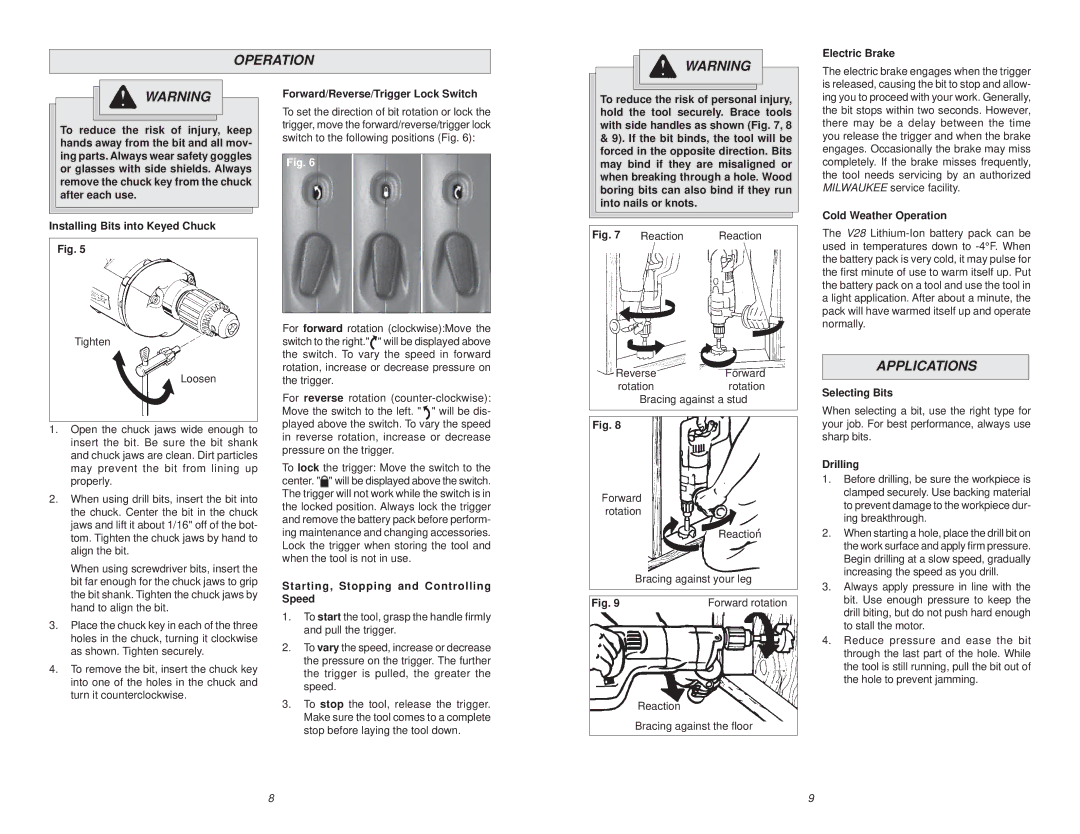0721-20 specifications
Milwaukee 0721-20 is a powerful rotary hammer drill designed predominantly for professionals in the construction and masonry industries. This tool stands out due to its combination of performance, durability, and advanced technology, making it an excellent choice for heavy-duty applications.One of the main features of the Milwaukee 0721-20 is its impressive SDS-plus chuck system, which allows for quick and easy bit changes without the need for additional tools. This feature enhances productivity, especially on job sites where efficiency is critical. The rotary hammer is equipped with a 7-amp motor that generates an impact energy of 2.1 Joules, delivering robust performance for drilling into concrete, brick, or other hard materials.
Moreover, the Milwaukee 0721-20 provides users with three modes of operation: rotary hammer, rotation only, and hammer only. This versatility allows users to tailor their approach based on the specific task at hand, whether it's drilling, chipping, or breaking up materials. The ability to switch between modes means that the tool can be utilized for various applications, enhancing its usefulness on the job site.
Another notable characteristic of this rotary hammer drill is its anti-vibration system, which significantly reduces user fatigue during prolonged use. This system is essential for professionals who regularly engage in heavy-duty drilling tasks, as it provides better control and comfort. The lightweight design of the tool also contributes to easier handling, making it suitable for overhead tasks as well.
In addition, the Milwaukee 0721-20 is built with durability in mind, featuring a robust construction that can withstand harsh working conditions. The tool is designed to resist dust and debris, prolonging its lifespan and maintaining performance over time.
The overall design includes ergonomically shaped grips that enhance comfort and provide a secure hold during operation. With a depth gauge included, users can achieve precise results while drilling, ensuring accuracy for various applications.
In summary, the Milwaukee 0721-20 combines power, versatility, and user comfort into a single tool, making it an essential addition to any contractor's arsenal. Its advanced features, impressive technologies, and durable construction position it as a standout choice for rotary hammer tasks in demanding environments.

